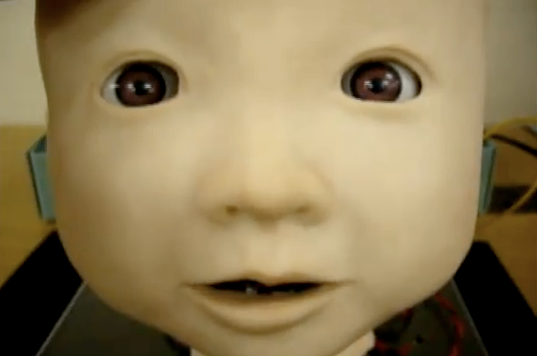Original Paper Discussing “Uncanny Valley” Now Available in English
Translated officially from the Japanese for the first time

The uncanny valley appears pretty frequently in these pages, at least in presentation — like the disembodied baby head above, for instance, or the wonderfully horrible Telenoid. These robots and others represent the gulf in our robot affinity that gapes open when machines approach a certain level of human likeness.
Masahiro Mori described this phenomenon 42 years ago, when he was a robotics professor at the Tokyo Institute of Technology. His paper was largely unnoticed for decades, but more recently it has become a touchstone for robotics, especially as they become more lifelike. But the paper was never published in English in its entirety, for whatever reason. Now here it is, in a new translation approved by Mori and appearing in IEEE Spectrum.
Mori notes the eerie sensation that arises when we are tricked into thinking an artificial limb is real, and then realize it’s not — it “becomes uncanny,” and we lose our affinity for it. He expresses this phenomenon in a graph.
“I have noticed that, in climbing toward the goal of making robots appear human, our affinity for them increases until we come to a valley, which I call the uncanny valley,” the new translation reads.
He also charts our affinities and lack thereof for still and moving objects, noting that our affinity is pretty high for a stuffed animal or a humanoid robot. But movement is key to our affinity — a humanoid robot would not move like a human, so it would be incredibly creepy, he says. “Imagine a craftsman being awakened suddenly in the dead of night. He searches downstairs for something among a crowd of mannequins in his workshop. If the mannequins started to move, it would be like a horror story,” he writes.
A still corpse is also down in the valley. At the deepest point: Zombies.
You can read the whole paper online here. IEEE Spectrum also has an interview with Mori, which you can read here.